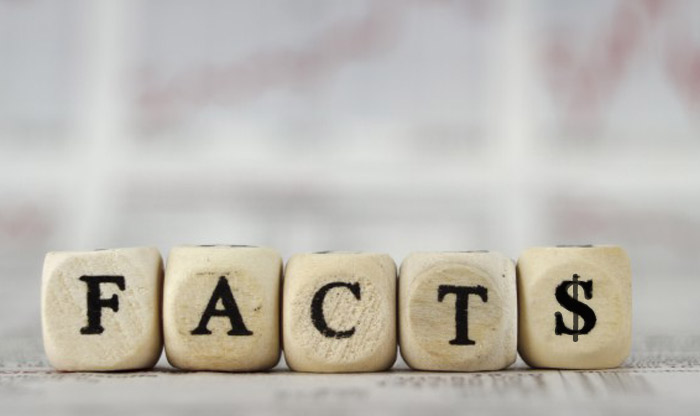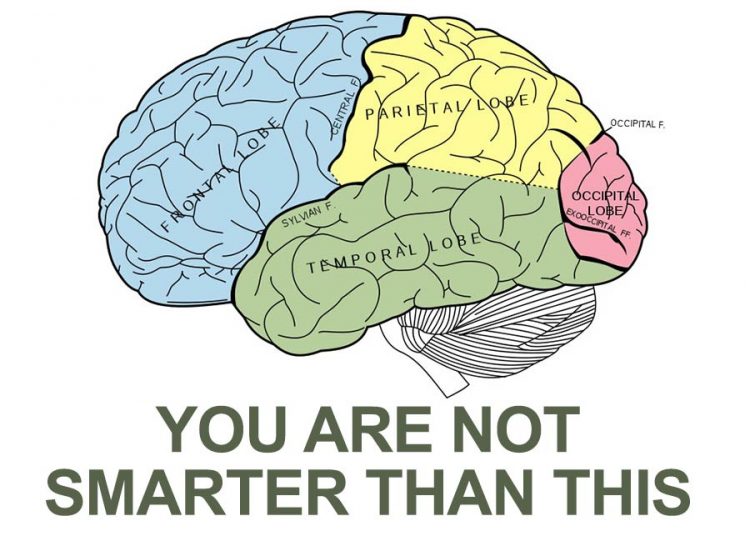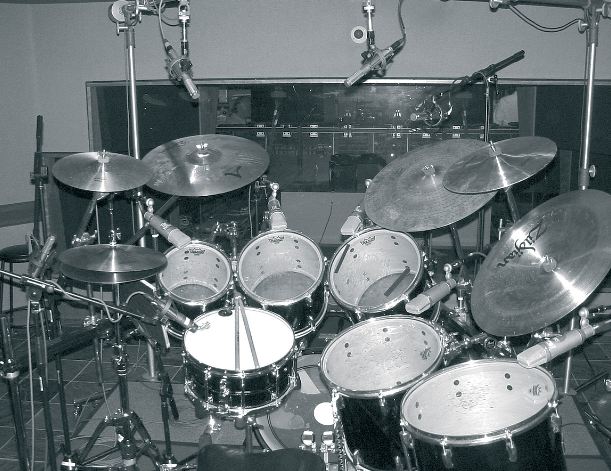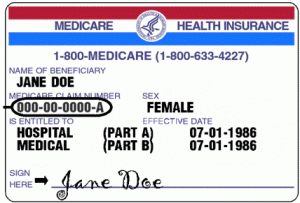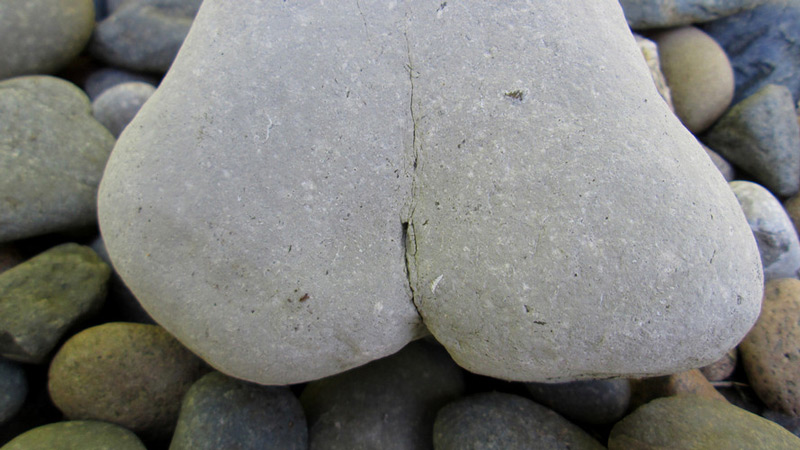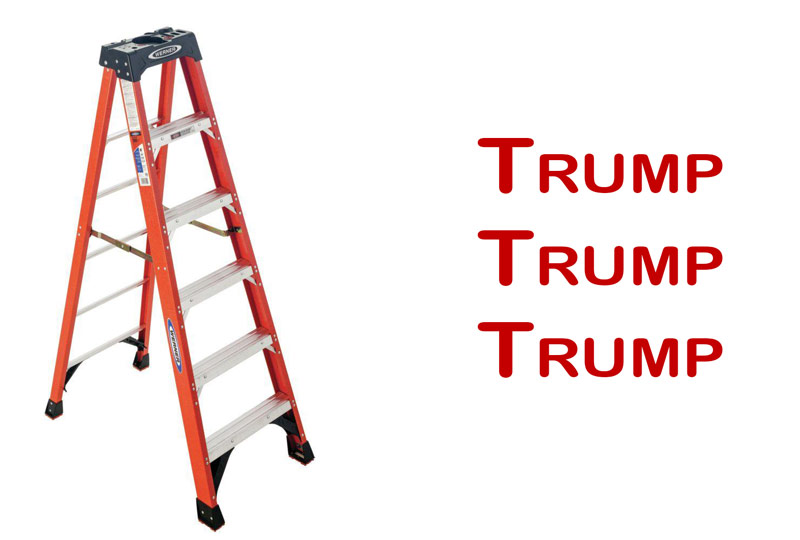You’re recording electric guitars. First you need to have a basic idea of mic placement on the guitar amplifier.
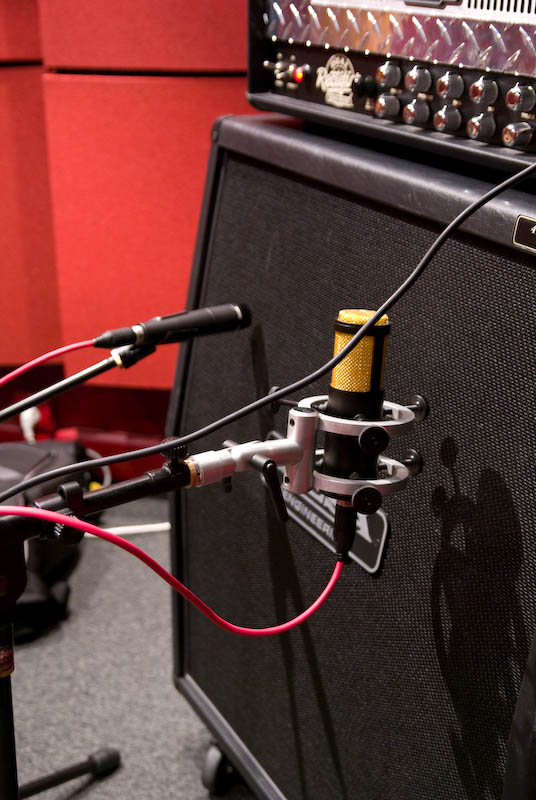 … that and have a good head and cabinet. If the sound source sucks, you can improve it a little with good recording and processing, but otherwise you’re making your job a lot more difficult.
… that and have a good head and cabinet. If the sound source sucks, you can improve it a little with good recording and processing, but otherwise you’re making your job a lot more difficult.
Rule One when recording electric guitars: know the tonal character of the speaker on the amp, because that helps you decide where to place the mic(s).
In short, the more towards the center, the more high end you’ll get (think of it sort of like more “cut”… sometimes it’s good, sometimes it’s not). The more towards the edge or rim of the speaker of the guitar amp cabinet the warmer it gets (not so much warmer like a tube or tape warmth, but just less cut, bit less harsh, but you also lose some of the really high frequencies).
Personally, I never record the back of an amp. Some people dig sticking a mic in the back of a guitar amp as well as in front, but I think that’s mainly because then they like to show off that they know they should likely reverse the phase of one of the mics. Audio engineers (and especially wanna be audio engineer people; I was one for a long time, I get it) spend so much time locked away and not seen that they build egos and like to show of whenever they can “you know…. you need to flip the phase on that mic, there….” geeesh. ;)
If you’re looking for what your brain might interpret as the sound from inside / behind the amplifier, use it as a room mic, or place the amp in a vocal booth with a mic on one of the corners. Blend that w/ the primary mic(s) and it will be a fuller sound (and yes… if you still want to, go ahead and flip the phase for fun, who knows, it might be worth it).
If your amp is somewhat fuzzy (not 100% crunchy distortion) then beware of 3.5-4.5kHz. Notch and sweep and you’ll know what I’m talking about.
Microphone Distance. Make sure at least one mic (usually two are plenty or two + a good room mic depending on the sound you want)… make sure at least one microphone has a very nice, clean, and direct sound. Spend time with your mic placement on that one. Both on axis and off axis (to check proximity effect vs. 6-7k-ish harshness). Try right against the screen (about 1 inch from the speaker) to 6 or so inches away until you have a good, clean sound w/ a general tone. Use a second mic to compliment it. DO NOT try to use the second mic to sound good on its own – that’s not the point. I never pan two mics on the same amp in the same take L/R stereo (that’s pointless in my book… see below for proper guitar stacking).
Microphone Selection: Go with what you got ;) My go to mics for distorted guitar rotated around a Sennheiser 421, Sennheiser 441, Shure SM57, and a large diaphragm condenser mic for space (don’t forget to put on the pad). Never more than three mics (two on cabinet and one for room), unless it was a clean sound (and down right beautiful tone between the guitar and amp) in which case I’d stereo mic the live room to really give it space, maybe tack on a DI as well (and then only if it’s a featured instrument and not just part of a big, busy mix – that’s only if you’re pretty much working with electric guitar and vocal only).
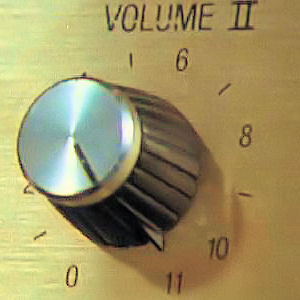 Distorted Guitar Tone: Dude… Turn That Sh*t UP! (I’m serious). Whether a big amp of a pig nose, make it loud if you’re mic’ing it. You want a high SPL and get that air moving around… you want the speakers in the amp to be struggling a bit. (pads on your condenser mics, and ear plugs in the live room!)
Distorted Guitar Tone: Dude… Turn That Sh*t UP! (I’m serious). Whether a big amp of a pig nose, make it loud if you’re mic’ing it. You want a high SPL and get that air moving around… you want the speakers in the amp to be struggling a bit. (pads on your condenser mics, and ear plugs in the live room!)
Clean Guitar Tone: the sound in the room is vital for recording a clean and/or funk and/or slightly blues tone electric guitar. Take time to get it right on the amp and in the room first. Move that thing around and listen in different areas. A good (even if not huge) room sound gives depth and a certain richness to a good, neck / middle pick up mostly clean guitar tone. Fattens that thing out. When recording clean electric guitars, look for balance in the mics that are on the cabinet. The key there is capturing everything you need without running into too much overdrive / speaker compression from the amp. If you’re recording a Telecaster (lord help you) it’s going to be hard to not make it feel like your ears will bleed, so put your mics ON axis, and towards the edge. Once you get enough body from something like a MD421, and some breathing room from the room mics, it will be a bit less harsh. Throw a multi-band compressor on it during the mix so that when the guitar player hits it hard the 2-4k range doesn’t pierce too badly and you should be OK.
Recording Electric Guitars (approach two by Phil Johnson)
Recording electric guitars in the studio is totally different beast from playing live. And whether you’re going into a big studio or doing it on your own with a laptop and a DAW, there’s a few guitar-specific things you can do to make the whole process go faster and sound better. These guitar recording tips cover a combination of preparing for the session as well as recording.
1. Use new strings – You want your guitar to sound it’s best even if you’re working with a off-brand copy of Korean knockoff of a Strat. And new strings are the easiest way to improve things. They’ll give the engineer a good bright sound to work with. Make sure they’re good and stretched out so they don’t go out of tune in the middle of the song. I usually put my new ones on the day before recording. If you’re doing a lot of recording on a regular basis, make sure to change them every one to two weeks. Otherwise you can end up with different sounding strings on different takes of a song, making it more difficult to edit later.
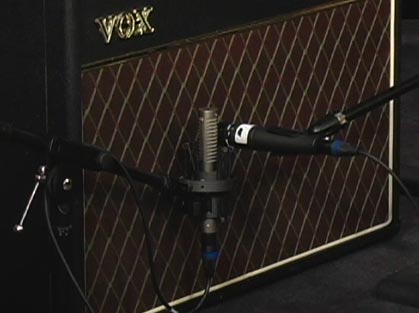 2. Tune before every take – On a similar note to using new guitar strings, you should tune your guitar before every take. I’ll admit I’m they guy the engineer is always yelling at tune before takes. Extra weird when I’m recording at home. Your guitar probably won’t be that out of tune, but keeping it fine tuned will, again, make editing much easier later on in the mixing process.
2. Tune before every take – On a similar note to using new guitar strings, you should tune your guitar before every take. I’ll admit I’m they guy the engineer is always yelling at tune before takes. Extra weird when I’m recording at home. Your guitar probably won’t be that out of tune, but keeping it fine tuned will, again, make editing much easier later on in the mixing process.
3. Pre-Production – Pre-production is a fancy word for “practice before you get into the studio”. You have some leeway here if you’re working in a home studio. But if you’re paying for studio time, you want to get in and get out as fast as possible. That means having your parts totally down before you step foot in the place. And that means making sure your bandmates have their act together too. And I always recommend playing the song live a lot before recording it, if possible. It will make the arrangement tighter and let any natural changes happen so you can get the best performance possible on tape. It’s like letting the song marinate before cooking it.
I made the mistake once of recording a whole song in the key of G. Then finding out that I couldn’t sing it in the key of G. We had to record all the pitched instruments again in the key of F. You can bet that cost me a few extra bucks. Learn from my boo-boos young padawan.
What about recording electric guitar solos? If you’re the type that likes to compose your solos, make sure it’s done before getting in the studio. If you like to let ‘er rip of the fly, that’s cool too. But be sure that you’ve improvised your solo on that song at least 100 times before recording. If you have to do more than 3 or 4 takes to get a solo you like, you’re blowing cash.
4. Leave off non-essential effects until mixing – The cleaner the signal going into the board, the more leeway you have to make changes later during editing and mixing. You want to have a good basic sound recorded and you can add all the gooey reverb and delay you want later on.
So, what’s considered essential? Maybe your overdrive or distortion if you’re working with a good amp and you want to capture that amp’s sound. A real Marshall still sounds better than any Marshall-style plugin. If you’re using a wah pedal, that should probably be in the original signal as well since it’s a real time effect. In fact, anything that you have to control in real time should be used during tracking. But ditch the reverb, delays, phaser, flanger, and other such things. That all gets layered on later.
Though I will say if you’ve got a particular pedal that you don’t have a matching plugin for, you’ll have to record it on the original signal. But, also record a totally clean version of the take with no pedal in case you don’t like it later. You can do that either by splitting the signal before the pedal to two tracks. Or you can just play it again.
5. Keep the overdrive/distortion down – Crunchy is good. But when you’ve got your distortion jacked up too high it will sound like white noise when you record it. It will also sound thin and get lost in the mix. Drop your distortion to half of what you use for live performance. Start there and record some sample takes to see how it sounds. A corollary to this is, let the engineer guide you. Especially if you’re new to recording and you can afford an experience engineer, use his expertise and let him help focus your guitar tone.
6. Small amps can sound great too – You don’t need a wall of Mesa Boogie stacks to get a great guitar sound when recording. Some of the greatest sounds on tape have been done with tiny amps. Giant amps are used for giant volume. And you don’t need that in the studio since you’re mic’ing and mixing. If the amp sound good by itself you can work from there and still get a huge sound.
If you are using a larger amp, like a 4×12, mic only the best sounding speaker. Placing the mic closer to the center of the speaker cone gives you a brighter sound. Moving the mic towards the edge mellows it.
7. Use two mics – One close, one far – If you’re in a good sounding room or studio, this will give you a nice natural reverb you can mix with the dry signal. Place the second mic about 5 feet from the amp. If your room doesn’t sound so hot or you just don’t like the sound of it, you can always trash that extra reverb track later.
8. Double track to thicken – This is the studio equivalent of a wall of Marshalls. If you want a big thick sound, double track your guitar parts. While you could just cut and paste the track, it’s the tiny variations in performance of multiple takes that really work nicely to beef it up. Do at least two tracks. Or go whole hog with the old Metallica trick of layering 30-40 tracks of the same guitar part. Just make sure the rest of the instruments don’t get lost in the mix. You and I both know the guitar is the most important but sometimes your bandmates thing they deserve to be there too. (wink)
Learning to perform in a recording studio has a learning curve just like learning to play live. These tips will give you a good start to getting your hit song recorded so the whole world can hear it.
Published: by | Updated: 08-03-2014 11:58:08



